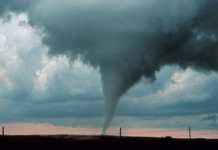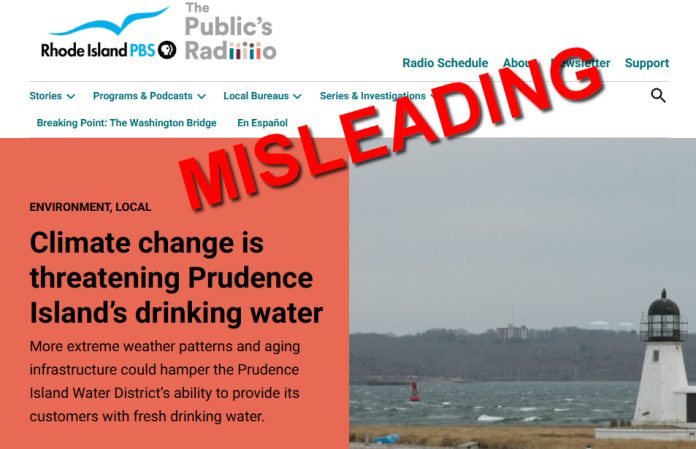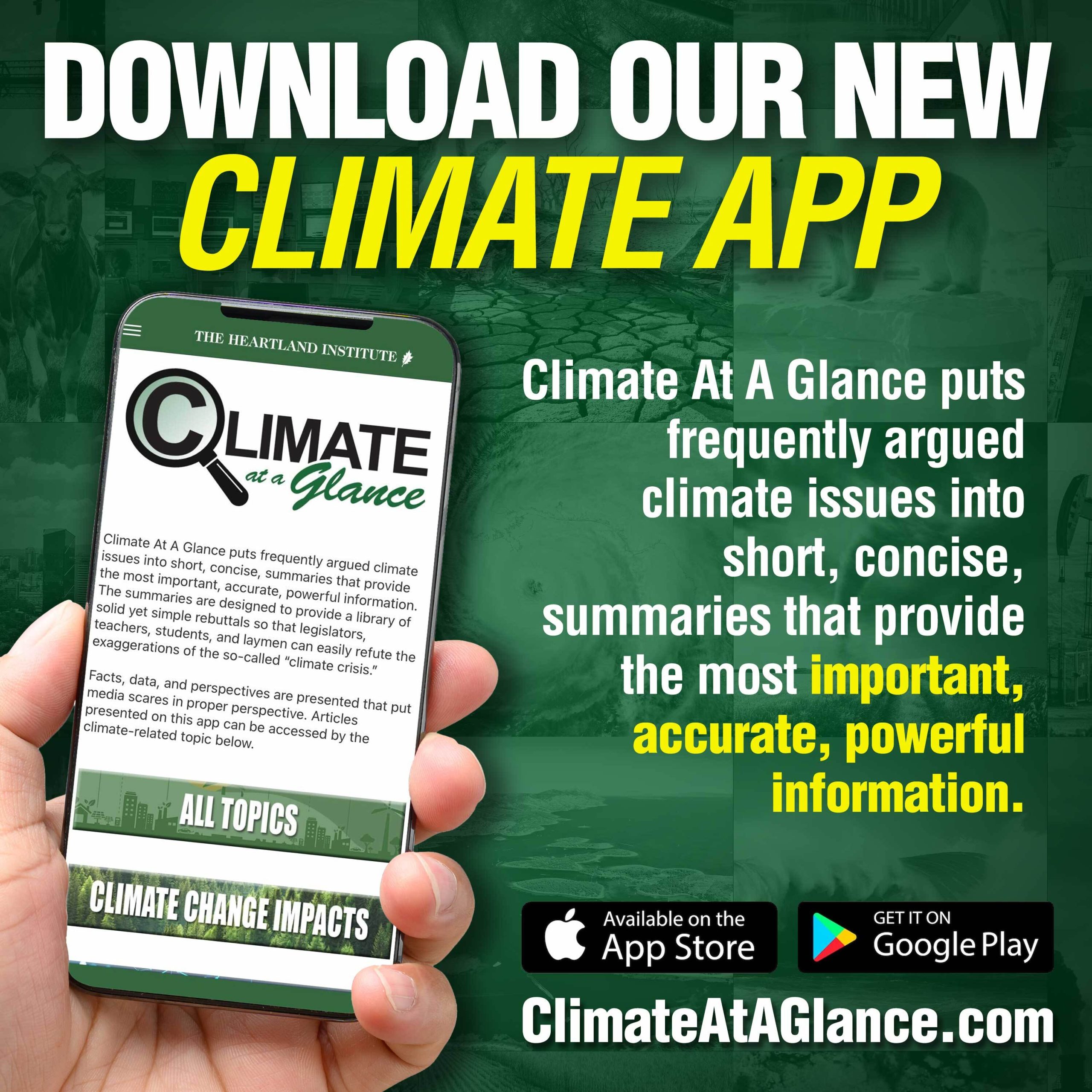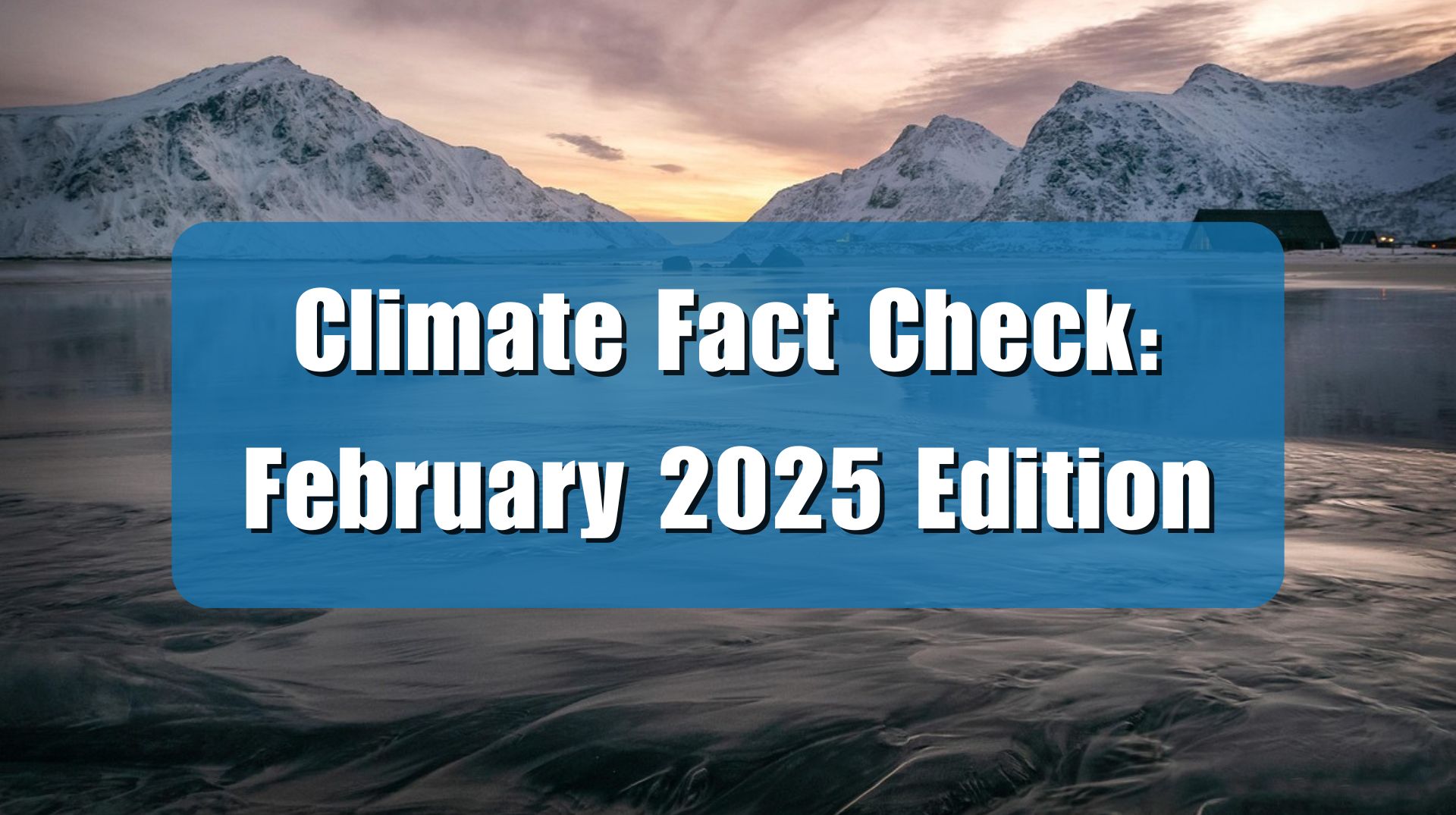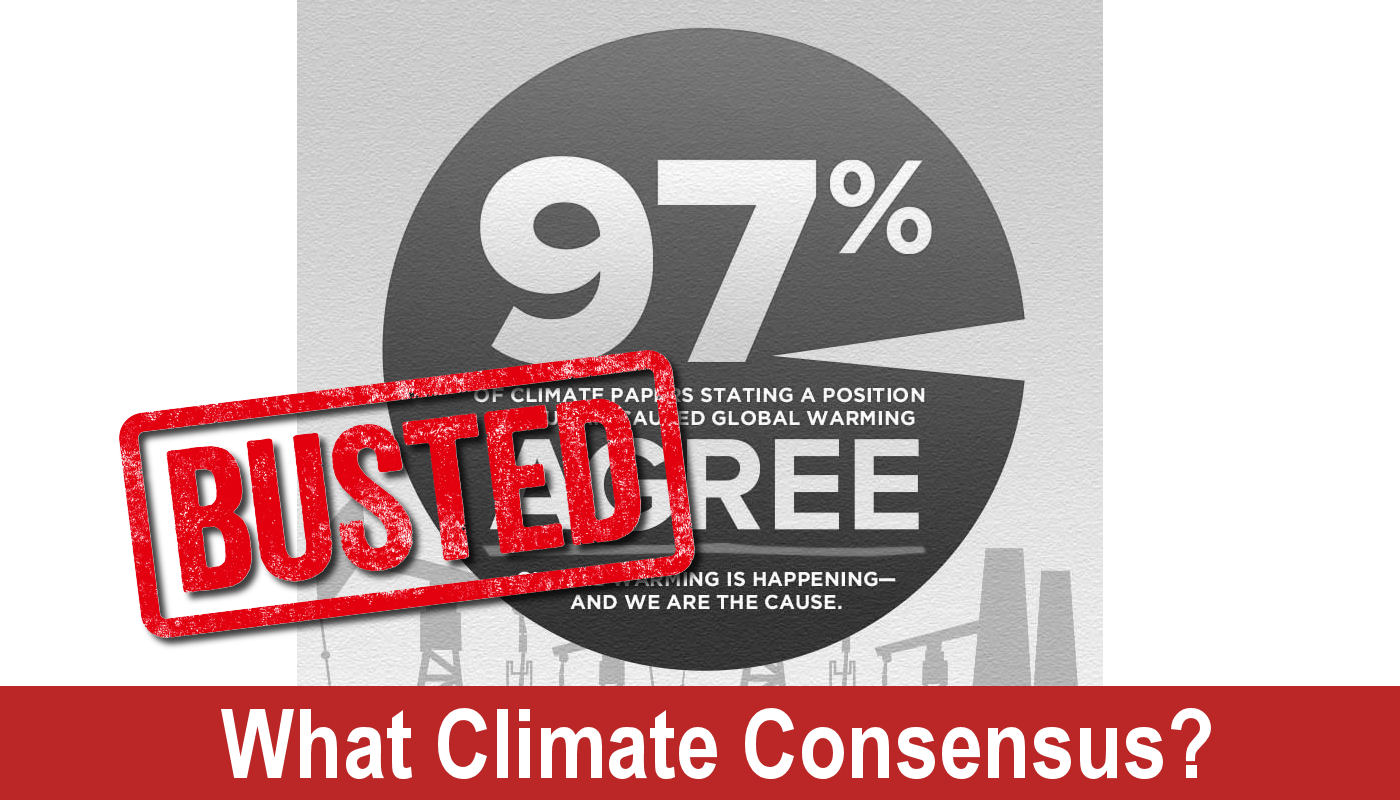Two recent stories from the Rhode Island Public Broadcasting Systems (PBS) claim that climate change is threatening the state’s drinking water, specifically by way of drought and sea water influx into aquifers. This is mostly false. While sea levels are rising, PBS exaggerates the rise. There is no evidence that extreme weather is getting worse for Rhode Island. Evidence suggests that population growth and infrastructure problems are mostly to blame for any threatened water supply.
The first story, “Climate change is threatening Prudence Island’s drinking water,” focuses primarily on an island called Prudence Island, which is home to 230 permanent residents, and the story explains that “snow birds” can make the population rise to about 1,500 people in summer months. PBS says that “climate change may be spurring a drinking water crisis for its residents.”
The very beginning of this story offers a viable explanation for low aquifer and water issues that the island has, though, with one resident explaining that older and less water-hungry houses are being replaced with much larger ones. The new homes have a higher water demand, and it is likely that many of these homes are seasonal rentals. Not only that, but according to the resident, people seem to be staying in their summer homes longer than in the past. She attributes this to longer summer weather seasons, but it is just as likely that post-COVID, more people are able to work remote, and thus enjoy their cottages longer. This means finite water supply is under more pressure and threatened by overuse.
Later in the article, a Brown University oceanographer claims that New England should expect more drought, more rain and snow in winter, and more intense storms in general. Weather data show that while there are more warm nights in the state, and “hot days” have also increased, overall precipitation has seen a slight increase since low points in the 1960s. (See figure below)
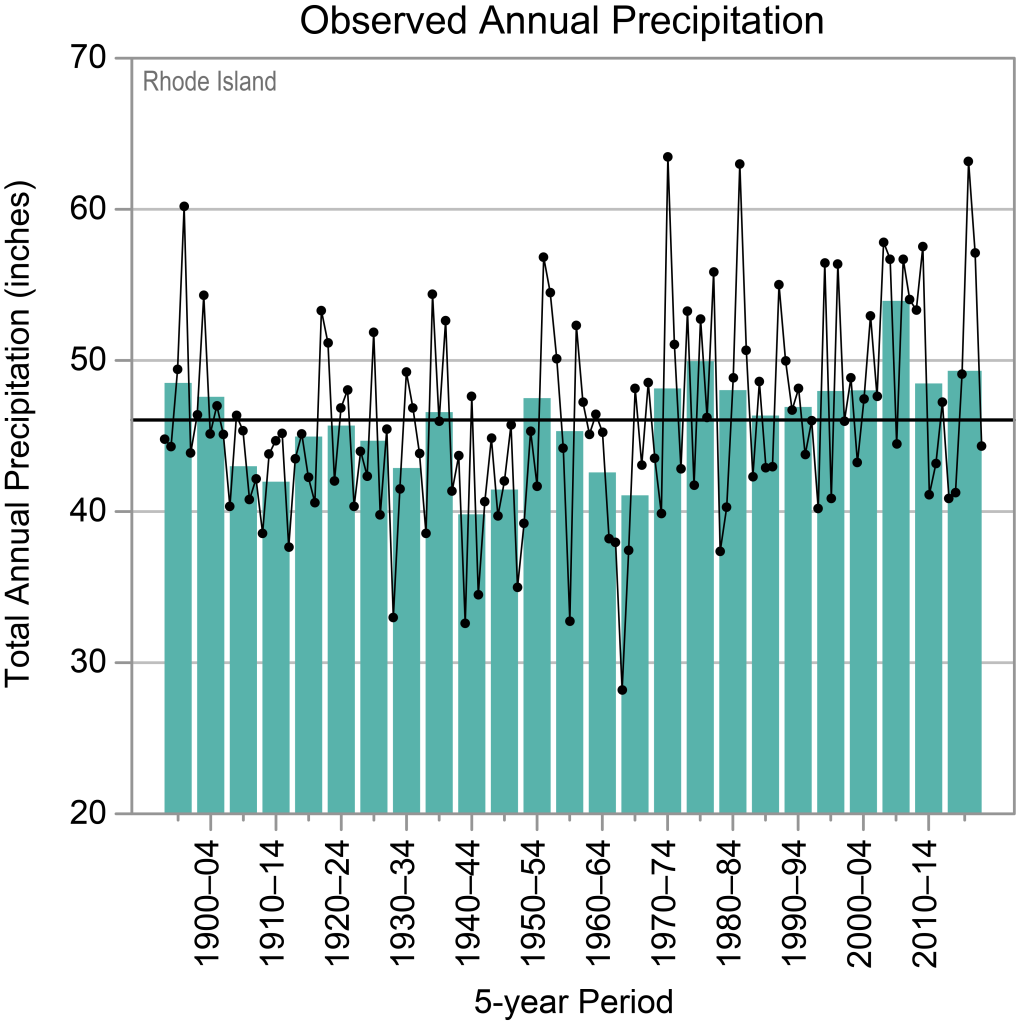
Indeed, drought data from the National Centers for Environmental Information’s Palmer Drought Severity Index for the state of Rhode Island show that the worst drought conditions occurred in the 1960s and 1950s, and have not been as severe or long lasting since. (See figure below)
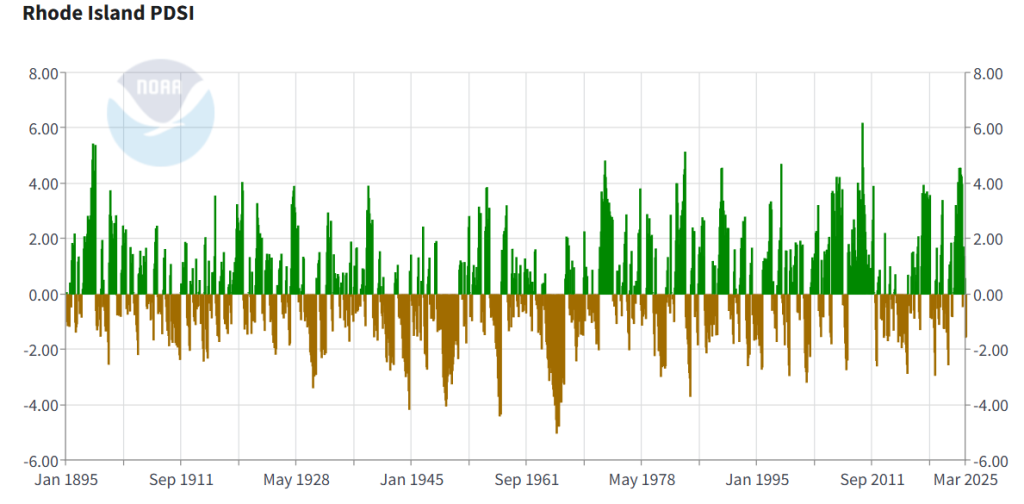
Increasing drought is unlikely to be the culprit behind Rhode Island’s water woes.
The second PBS story, “How climate change will affect Rhode Island’s drinking water, and how we can better prepare,” makes similar claims, and focuses more on sea level rise and salt water intrusion into freshwater aquifers.
PBS interviewed the same expert for this story as the other, Baylor Fox-Kemper, a professor from Brown University’s Department of Earth, Environmental, and Planetary Sciences. He tells PBS that changes in sea level are slow to respond to emissions, and even if emissions stopped now, “we would still see sea level rise for quite some time — for hundreds of years.”
It is true that sea level rise should be expected regardless of human activity. The simple fact that the globe is exiting a glacial period, as well as leaving behind the Little Ice Age, should cause us to expect ice melt and sea level rise. The estimates that by 2100 Rhode Island will see 50 cm (19 inches) of rise are questionable, however.
Current rates of relative sea level change for Rhode Island sea level stations are around 2.97 (Newport) and 2.56 (Providence) mm per year. At that rate, relative local sea level will rise 222 mm by 2100, or 22 cm (8 inches). This is roughly the same rate of rise that occurred in the 20th century and the 19th century before that, so there is no signal indicating climate induced sea level rise acceleration. Fox-Kemper is assume acceleration that can’t be found in the best data. 8 inches is relatively low, indeed, being below global average sea level rise. Infrastructure planning should take sea level rise into account, but it is hardly a looming catastrophe.
The question remains – what is threatening Rhode Island’s water supply?
Population growth and ageing infrastructure seem to be the most immediate threats.
According to Census Bureau statistics (compiled by Neilsberg) Rhode Island’s population has risen and dropped in fits and starts, but the last few years seem to have seen a pretty sharp jump compared to previous years. It is the smallest state in the union, and is an island, all of which makes supporting a growing population more difficult. On Prudence Island, PBS reports that the “most promising water stores are all located on state land, much of which is designated as a conservation area” and are not allowed to be tapped for water wells.
In other parts of the state, water handling infrastructure is lacking. The state’s Infrastructure Report Card gives drinking water only a C+, due to ancient cast iron water mains with leaking and some lead contamination issues. State infrastructure and finite water does not appear to be keeping up with population growth.
Sorry, PBS, there is no reason to blame climate change for water woes in the state when data show it is far more likely that infrastructure and population issues are the culprits.





